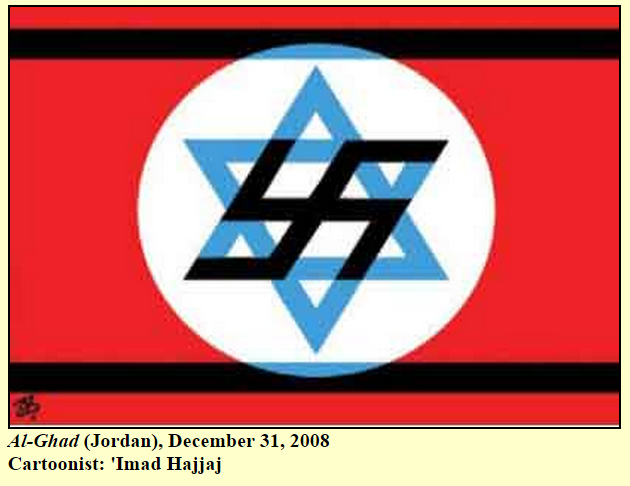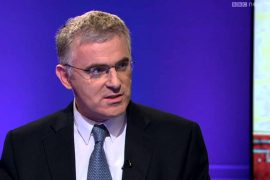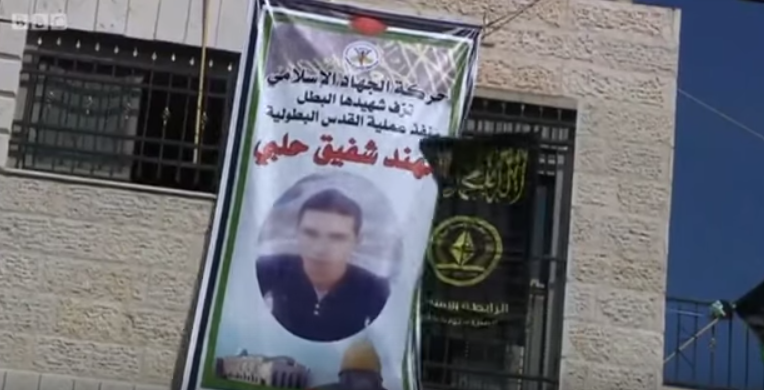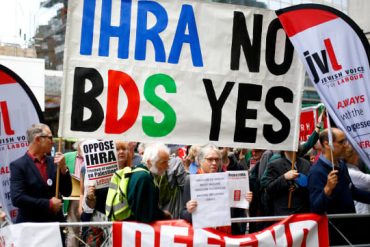The day after the French president described the terror attack on the kosher supermarket in Paris in which four people were murdered as “an appalling antisemitic act”, the BBC World Service’s ‘Fifth Floor’ decided it would be good idea to highlight the work of a Jordanian cartoonist known for his antisemitic imagery.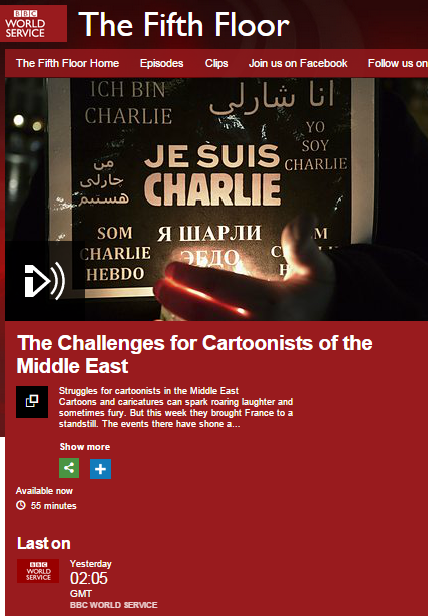
Presenter David Amanour’s introduction to the item broadcast on January 10th (available here from 01:00) was as follows:
“We start this week with the world of satire and the drawings that can provoke both roaring laughter and fury. The events in France this week highlighted the dangers facing political cartoonists around the world. Today we’re focusing our attentions on the Middle East and the challenges cartoonists face there. With me here in the studio is Abdirahim Saeed of BBC Arabic and Turkish journalist with the BBC, Seref Isler.”
Readers can judge for themselves whether or not the item fulfilled its stated goal but they will no doubt notice that a character created by the first cartoonist highlighted in the programme – the long since deceased “famous Palestinian cartoonist” Naji al Ali – is used to amplify a context-free narrative.
Abdirahim Saeed: “He’s got a stock of iconic characters that still live on and are still relevant in today’s world; in today’s politics in the Middle East.”
David Amanor: “Characters like?”
AS: “Characters like Handala. It’s like Ali always mentioned that it’s based on him. Handala is supposedly a ten year-old kid, barefooted, downtrodden but still hopeful of one day returning to his homeland where he was – according to the Palestinian narrative – they were obviously put into exile and expelled from their land. […] So it’s not just commentary – a running commentary on Palestinian affairs but it’s actually a running commentary on what’s happening in the Arab world…”
There is of course a significant difference between cartoons as “running commentary” or satire and the use of images to create or reinforce an inaccurate politically motivated narrative.
The second cartoonist highlighted by Saeed is introduced as follows:
DA: “Let’s talk about sensitivities then. A Jordanian cartoonist Emad Hajjaj – has he been upsetting people? I mean how would you describe his cartoons?”
SA: “I mean a bit like Ali Naja again. I mean he’s a brilliant commentary for what’s happening in Jordan in his own country but also across the Middle East…”
Here are two examples of that “brilliant commentary” from Emad (also Imad) Hajjaj from the time of Operation Cast Lead in 2008/9.
As anyone who knows even a little about cartoons in the Middle East will be aware, the use of antisemitic themes and imagery is very common and long-established. That fact, however, was not communicated to BBC audiences in the Fifth Floor’s discussion of Middle East cartoonists.


